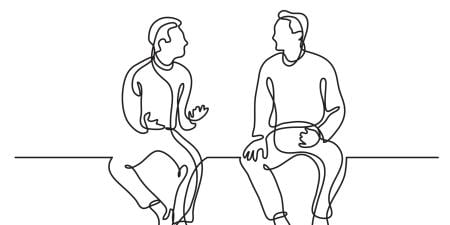When we consider health, stature, abilities, talents, and other physical and personality characteristics as integral aspects of who someone is, we seldom think seriously about whether those traits have been distributed justly or unjustly. We are accustomed to the fact that some people are more gifted than others, and unless nature has been particularly "cruel," we generally dismiss disparity with comments such as, "Lucky Alex. He's got looks and brains, and plays a mean game of (whatever)." Rarely do we apply concepts of parity and justice. But genetic information and gene therapies could change our acceptance of diversity and disparity. When we begin thinking of health, skills, and talents reductively as combinations of nitrogen bases residing on discrete segments of DNA, it is easier to think about them as "parts," assets, or even resources. And once health and other valued character traits become resources, we want to see them distributed not randomly but justly. In this light, what we once dismissed as a matter of good or not so good fortune ("lucky Alex") we now view as a matter of just or unjust, fair or unfair, distribution of traits1.
Genetic knowledge and technology will force us to consider which inherited conditions are "normal" and which deviations from "normal" constitute a valid need for medical care. Answers to these questions form the foundation for economic decisions: To what extent does society owe "normal" health to all its citizens? To what extent should its healthier citizens be expected to subsidize care for the less healthy?
Knowledge of our genetic make-up has already begun to test existing definitions of illness and health. Is a young adult with a mutation that leads to Huntington's disease or might lead to breast cancer an entirely healthy person, a pre-symptomatically ill person, or merely, like everyone else, a potentially ill person? Does that person have a claim on medical services2? The most widely used working definition limits "medical care" to those interventions employed to prevent illness, disease, and dysfunction; treat symptoms of illness, disease, and dysfunction if they occur; and restore function that is normal for a given individual's age and sex3.
This standard medical model, as it is called, has been used to distinguish between needed medical services and optional or elective medical services. Decisions by both government and private payers about whether or not to reimburse expenses for a given medical service are generally closely tied to whether or not the intervention is considered to be a needed medical treatment, according to the standard medical model.
Even before the Age of Genetics, some distinctions were difficult to make: the medical "need" for many psychiatric and plastic surgery procedures that could be linked, sometimes loosely, to "normal function" for one's age and sex was often disputed. Fertility clinic services are another good example. Does infertility constitute medical need? The effectiveness of a given treatment was often questioned, even though medical need was not. Could the treatment truly be considered therapy if its efficacy was still in question? Genetic information will blur these boundaries further, challenging definitions of medical need and treatment in ways that could easily create greater disparity in distribution of health care services.
In the late 1980s, when discussion of the potential for genetic intervention was still largely hypothetical, the distinction between therapy and enhancement was invoked in the hope that the standard medical model would offer a means for distributing genetic services equitably. Gene therapy should be provided and reimbursed for disorders that created medical need. Other genetic interventions—so-called enhancements—would have no claim on insurance or government coffers. Genetic enhancement would be optional and elective.
The distinction proved difficult to maintain. Borderline "hard" cases cropped up. Suppose it were possible to genetically enhance the immune system beyond what is now normal. Doing so would prevent illness and save treatment costs later on. Would that be therapy or enhancement? Would it be worthwhile for society to bear the cost of such treatment? Theorists soon recognized a more serious flaw in the therapy-enhancement distinction—the consequences its implementation would have. If enhancements were not reimbursed and only the well-off could afford it, a "genobility" would soon arise4. "Not only will the rich have more money than the rest of us," said philosopher Thomas Murray, "they'll be taller, healthier, better looking, and smarter"5. Some social intervention seems called for to prevent such an exacerbation of disparity in health-related opportunity. Can we restrict enhancement, even for those who can afford it? Should society be expected to compensate for all differences in distribution of natural assets, for each individual's good or bad luck in the natural lottery?
Recent thinking about whether and to what degree society and its individual members should bear the burden of correcting inequalities in the distribution of natural assets is summarized in From Chance to Choice: Genetics and Justice, published last year6. Its authors outline 2 positions on the question, which they call the social structural view and the brute luck view. The former view holds that society satisfies its obligation to provide equal opportunity when it compensates for defective social structures such as discrimination on the basis of race, gender, and physical disabilities. The social structural view is extended to establish a mandate for treating and preventing disease at society's expense. The argument goes like this: Equal opportunity demands that social structures and institutions not restrict "normal" competitors in their pursuit of the goods that society has to offer. But disease can constitute just such a restriction by preventing an individual from being a normal competitor. To ensure that competitors are "normal" at the starting line, so to speak, society incurs an obligation to prevent and treat opportunity-limiting disease. That is where this view stops—at normal health for all citizens. Beyond that, the distribution of natural assets, though unequal, cannot be said to be unfair or unjust; one's bad luck in the natural lottery is just that, bad luck, and society has no obligation to provide, at its expense, remedial treatments or accommodations.
The other model—the brute luck view—maintains that people's opportunity should not be limited by circumstances over which they have no control. This view supports the notion that there can be genetically based conditions that limit people's opportunities though they may not, strictly speaking, be conditions that create the need for medical services as stipulated under the standard medical model. And society should incur the cost for correcting the unfortunate, unequal distribution of natural assets that impede one's ability to pursue opportunities. The brute luck view endorses the goal of freeing humans from opportunity-limiting effects of misfortune in general.
As is proving to be the case in so many aspects of genetic knowledge and technology, the questions being raised are not new. Rather, they give new urgency to issues that our society has not resolved. They force us to confront deeply contentious matters of individual versus social responsibility and to define what exactly our forefathers intended when they sought to guarantee citizens equal opportunity to pursue happiness, a pursuit promoted or inhibited in large part by health status.
To a large extent, philosophers and social scientists have advanced the discussion of how genetic information and technology will alter society's understanding of medical need. Physicians should want to weigh in on the discussion as well. Their specialized knowledge of human anatomy and physiology, along with their commitment to healing and human wholeness, qualifies them to speak out. The medical profession is not simply executor of society's health-related whims and wishes. Its contract requires that physicians not only apply their knowledge to the individual patient, but also help society formulate realistic concepts of health, illness, and medical need.
AMA Policy
The Code of Medical Ethics Opinion 2.11 states AMA policy on gene therapy.
The Code of Medical Ethics Opinion 2.13 states AMA policy on genetic engineering.
Questions for Discussion
Genetic information is redefining what society and the medical profession consider "normal" and what departures from normal are deserving of medical intervention.
- In a health care system with limited resources, what role should physicians play in helping to determine medical need and helping to decide which interventions make just claims on the society's health care resources?
References
-
The conceptualization of talents as "resources" is from Meilaender, G. Genes and resources. Presented at: Hastings Center Meeting on Genetics, Boston, Mass; May 19, 2001.
-
A landmark legal test of whether those with mutations that predispose to illness are entitled to be reimbursed for treatment before they have disease symptoms came in 1994 with Katskee v. Blue Cross/Blue Shield, 515 N.W. 2nd 645 (Neb. 1994). Mrs. Katskee tested positive for a genetic mutation associated with breast and ovarian cancer and asked Blue Cross/Blue Shield to cover prophylactic hysterectomy bilateral oophorectomy. The claim was denied, contested, and approved by the appeals court.
-
Daniels N. The human genome project and the distribution of scarce medical resources. In: Murray TH, Rothstein MA, Murray RF, eds. The Human Genome Project and the Future of Health Care. Indianapolis: Indiana University Press; 1996: 187-194. The standard medical model outlined in the 1980s does not include the more recent notion of palliative care, which is alleviation rather than treatment of symptoms.
-
Mehlman M, Botkin J. Access to the Genome, the Challenge of Equality. Washington, DC: Georgetown University Press; 1998:98.
-
Murray T. Genetics and the moral future of mankind. Presented at the University of Texas Medical Branch, Galveston; May 9, 1997.
-
Buchanan A, Brock DW, Daniels N, Wikler D. From Chance to Choice: Genetics and Justice. New York: Cambridge University Press; 2000:61-100.



